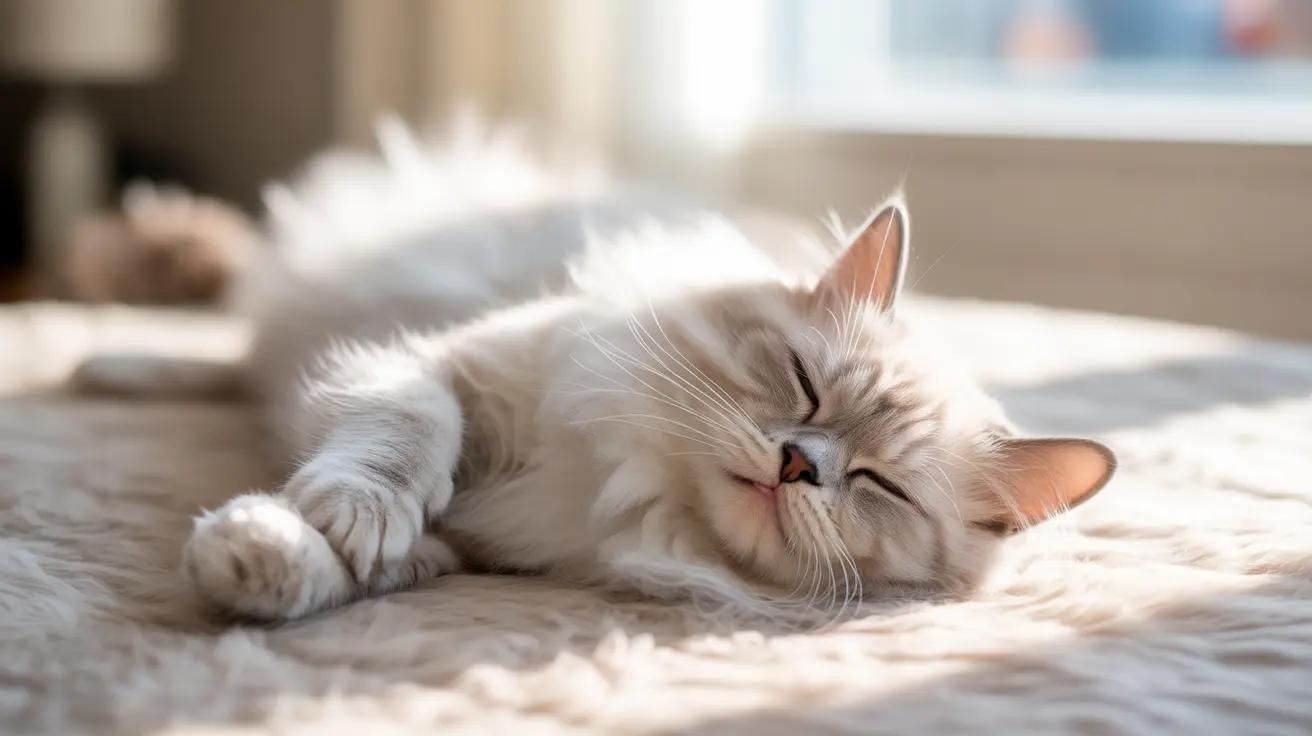Have you ever watched your cat twitching and making tiny noises in their sleep, wondering what's playing out in their mind? Scientific research confirms that cats do indeed dream, and their dreamscape is likely filled with echoes of their daily activities, instincts, and experiences. Let's explore the fascinating world of feline dreams and understand what goes on in your cat's mind while they slumber.
Just like humans, cats experience REM (Rapid Eye Movement) sleep, the stage where most vivid dreams occur. During this time, their brains show activity patterns remarkably similar to when they're awake, suggesting they're mentally reliving or processing their daily experiences.
The Science Behind Cat Dreams
Research into feline sleep patterns has revealed fascinating insights about how cats dream. During REM sleep, cats exhibit distinctive brain wave patterns that mirror those of humans during dream states. Groundbreaking studies, particularly Michel Jouvet's research in the 1960s, demonstrated that cats would actually act out hunting behaviors during REM sleep when certain brain inhibitors were disabled.
EEG studies show that cats cycle through sleep stages multiple times throughout their extended rest periods, with REM sleep occurring approximately every 25 minutes – much more frequently than humans, who typically enter REM sleep every 90 minutes.
Common Dream Themes in Cats
Based on scientific observations and behavioral studies, cats likely dream about activities that dominate their waking hours. These typically include:
- Hunting and stalking prey
- Playing with favorite toys
- Interacting with their human family members
- Exploring their territory
- Eating and grooming
Signs Your Cat Is Dreaming
You can often tell when your cat has entered dreamland by looking for these telltale signs:
- Twitching whiskers and paws
- Tail movements
- Soft vocalizations or "sleep talking"
- Rapid eye movements under closed lids
- Small muscle jerks or "running" movements
The Role of Sleep Cycles in Cat Dreams
Cats spend an impressive 16-18 hours per day sleeping, with both REM and non-REM sleep playing crucial roles in their rest patterns. During non-REM sleep, cats experience shorter, snapshot-like dreams, while REM sleep produces more vivid, story-like dream sequences.
Interestingly, cats maintain a degree of alertness even while sleeping – an evolutionary adaptation that helped them survive as both predators and prey in the wild. This means their dreams might be punctuated by brief moments of environmental awareness.
Frequently Asked Questions
How can I tell if my cat is dreaming while they sleep?
Look for twitching whiskers, paw movements, tail flicks, and rapid eye movements under closed eyelids. These physical signs typically indicate your cat is in REM sleep and likely dreaming.
What do cats usually dream about based on their behavior and brain activity?
Scientific evidence suggests cats dream about their daily activities, including hunting, playing, eating, and interacting with their owners. Brain activity during sleep closely mirrors patterns seen during these waking activities.
Why does my cat twitch, move their paws, or make noises while sleeping?
These movements are normal reactions to dream activity during REM sleep. The brain is actively processing daily experiences, and these small movements reflect the mental replay of physical activities.
Do kittens and senior cats dream differently or more often than adult cats?
Kittens tend to spend more time in REM sleep and may show more pronounced physical movements during dreams. Senior cats maintain regular dream patterns but may sleep more overall than adult cats.
Should I be concerned if my cat moves a lot or seems to act out their dreams while asleep?
Mild twitching and movement during sleep is normal. However, if you notice violent movements, rigid limbs, or unusual vocalizations, consult your veterinarian as these could indicate underlying health issues.
Conclusion
While we may never know exactly what cats see in their dreams, scientific research gives us compelling evidence that our feline friends experience rich, complex dreamscapes filled with echoes of their daily lives. Understanding your cat's sleep patterns and dream behaviors can help you better appreciate their rest time and ensure they're getting the quality sleep they need for optimal health and happiness.






